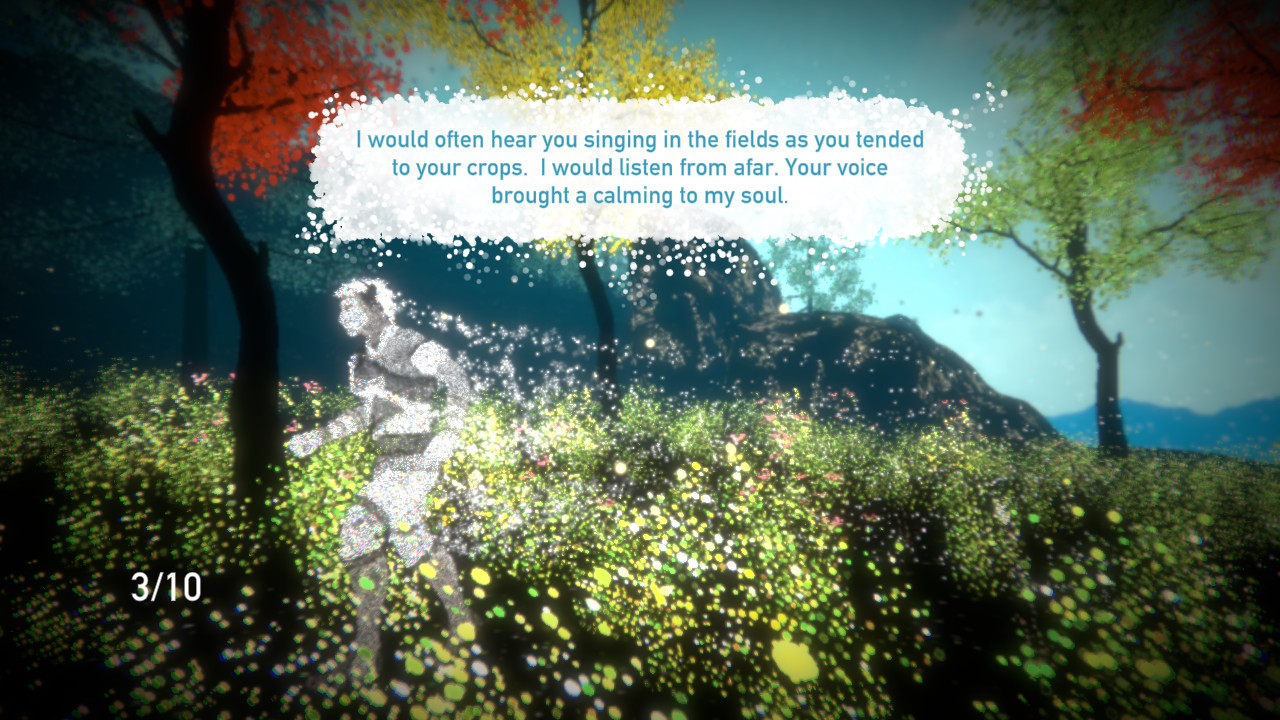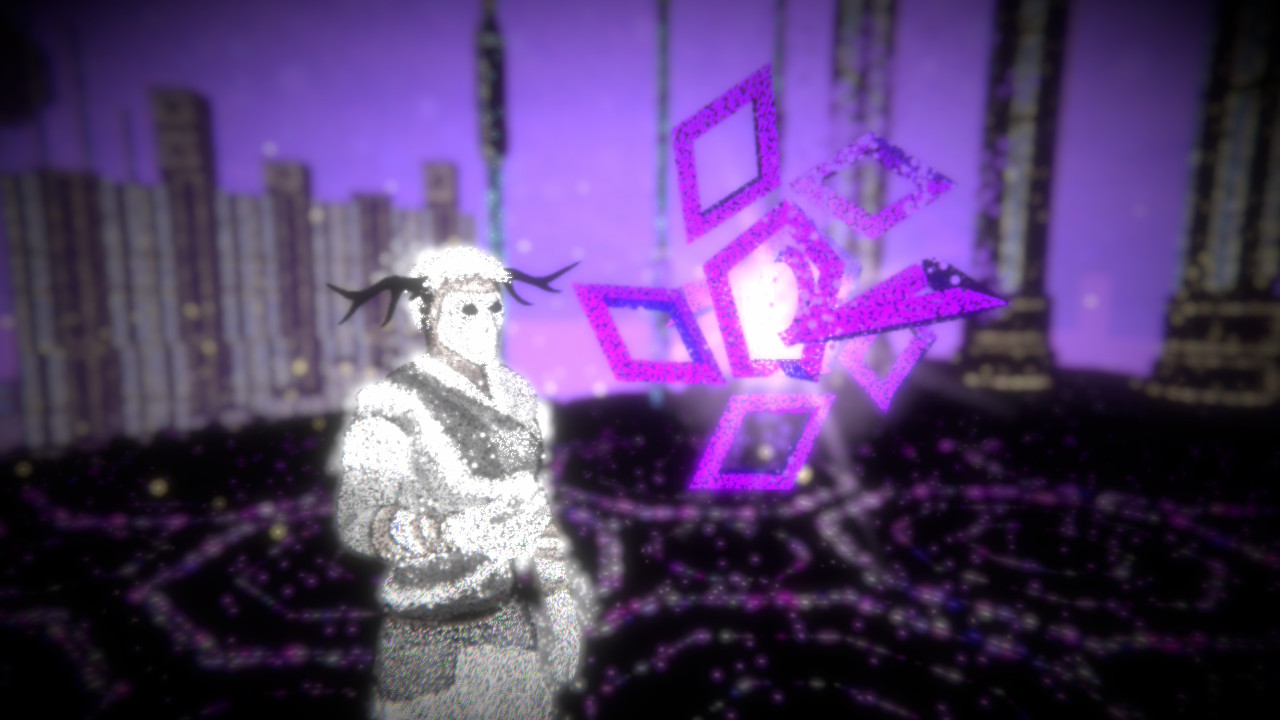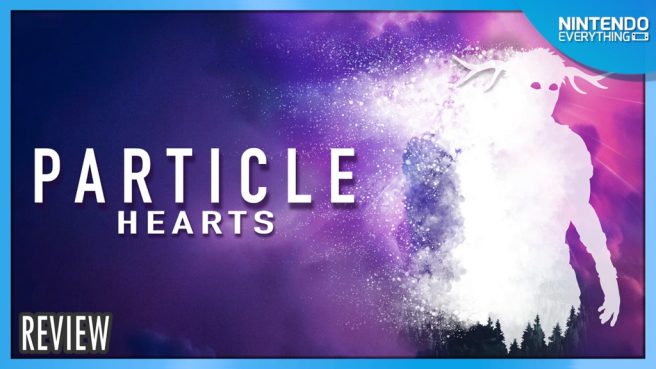Particle Hearts review for Nintendo Switch
System: Switch
Release date: August 25, 2025
Developer: Underwater Fire
Publisher: First Break Labs
Underwater Fire Games are a brand new independent studio from Los Angeles, and on the team’s website, the mission statement says they seek to create thought-provoking video games that fill their players with a sense of wonder. Their first video game, Particle Hearts, is an ambitious 3D puzzle platformer that has taken elements from several big name titles like Journey and the more recent mainline Zelda entries. Underwater Fire Games ultimately crafted its own unique title that operates quite differently than anything I have ever played before.
The player takes control of an unnamed, mute, and spectral-like protagonist on their quest to discover who they were and what happened to them. The game opens on a voice reaching out to the character, beckoning them forward, but upon gaining control after the opening cutscenes, players are given pretty free reign in what they can do. This title is very interesting narratively because it offers you both as much and as little as you want. If you are like me, then you had a lot more questions than answers wandering around the first level. There’s no map, no UI indicators to tell you where to go. Instead, the player has to search the landscape of the first level, and indeed every level, to find Torii Gate-esque structures to beat the level and the game. To learn more about the protagonist, the voice speaking to them and basically anything to do with the plot, players must seek out wind chimes that are littered throughout each level. That voice speaking to our particle-based hero will give a little lore drop, just a quick line, but it will probably answer a question burning in the mind of the player. However, should you not really have any interest in the story, you can just find the Gates, enter those puzzle rooms and earn the item required to move on.

In terms of gameplay, the protagonist gains more abilities to help them traverse levels, but base abilities include a dash forward, which can also be performed in the air, a particle burst move where the protagonist can spread its being about a bit and phase through things that they normally can’t, and an attack button which gains use later. The gate dungeons feel heavily inspired by Breath of the Wild shrines in that you have to think a little bit outside the box to complete the goal. It might be just about reaching the end, but it could be about manipulating the environment to make a path forward or memorizing a pattern to open a gate. Though the first level only has two puzzle rooms, the second has three and they get a lot trickier very quickly. These were the elements of the gameplay I enjoyed the most, and often because of the protagonist’s limited capabilities, it became more fun trying to figure out what I could jump off or where I should burst and with what timing and I genuinely had as much fun with them as the shrines in Zelda.
Particle Hearts has the unique trait of providing an option for those who just want the platforming fun, and for players who want an enriched story about connection and despair. To get the most out of the game, I really do think it is worth roaming around the fields and caves in search of wind chimes. This is also an experience in which I think the audio and sound effects are paramount to giving an optimal experience. As there is no map or visual indicators, to find the chimes players need to listen carefully and follow the sounds of werewolves growling and the chimes tingling, which grows louder as you get closer. It reminded me a little of Master Emerald hunting in the Sonic Adventure games, where beeps would indicate you were getting closer to a piece, and the beeps would get louder and more distinct as you closed in. The overall score is stellar, and the environmental design and each level’s melody are genuinely fantastic.

Unfortunately, this level exploration is where the title is at its weakest, in my opinion. The biggest problem I have is that the protagonist is very slow, and although they have a dash, it isn’t something they can hold down and do continuously so it really isn’t much use. There are white shapes in the levels that give the protagonist a brief dash forward but I wish that was something they could do naturally. There are no upgrades to speed the player character up, so although it adds to making the protagonist feel vulnerable, I think it was something that hurt the flow and ultimately my enjoyment of it. As exploration and traveling around each level is the meat of the game, your fondness for it will be heavily dictated by how you feel about this. It was fine for the first half, but as the levels get much longer and more expansive later, it became something that really burned me out towards the endgame of this eight hour adventure.
Particle Hearts is an ambitious puzzle platformer with an interesting plot that delivers on the visual spectacle and the wonder that the development team set out to create. Unfortunately for me, this is a game where the first half is more fun and engaging than the latter. The slightly repetitive puzzle structure and more egregiously, the limited player travel movement, hurt my overall enjoyment. However, the strong and impactful narrative, fantastic visual design and score, and Figment Gates that are a highlight of the platforming, ultimately tipped the game over into being one I would recommend to players. There’s enough heart and soul here to warrant a look.
Particle Hearts copy provided by the publisher for the purposes of this review.

